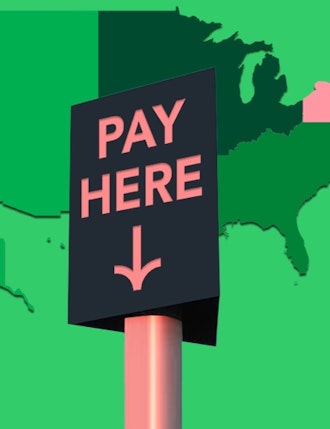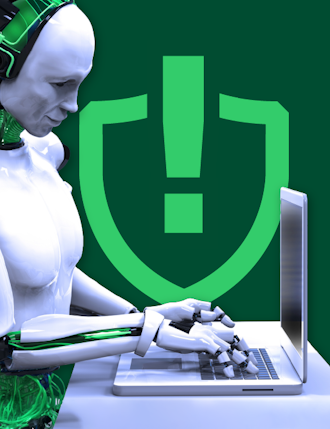Like most retail sectors, gas station convenience stores are undergoing rapid market change.
Fuel and convenience stores (c-stores) need to adapt to an increasingly mobile population, new technology and shifting consumer behaviors. Today’s retailers are challenged by an increasingly decentralized payments infrastructure; limitations imposed by service providers; and regulatory complexities of managing face-to-face payments across different channels and countries.
Read on for 5 key trends worth knowing about the gas and convenience store industry.
1. EMV mandates & charge backs
The U.S. Payments Forum released a market snapshot showing the state of EMV chip adoption in the United States in 2019. The report showed that the technology is now well-established in the U.S. with 63% of in-store payment terminals being chip-enabled, and 68% of total transactions being chip-on-chip.
“While POS terminals (traditional/ fixed) show high current investment interest at 37%, a big drop is anticipated for activity in 2021 (18%). This expectation is validated by the huge number of retailers who say their POS terminals are up-to-date (55%), which means that a great deal of POS implementation work (both hardware and software) has taken place in the last few years and the peak of the cycle is about to occur.”
With C-store EMV implementation still underway, fuel retailers have an additional challenge of complying with the EMV pump mandate which came into effect in April 2021. One study shows that chargebacks have tripled since January 2011. Both fuel and convenience merchants can strengthen their payment security by utilizing a multi-layer system of P2P encryption, advanced fraud detection, and transaction tokenization. To maintain their customer base and ensure future revenue growth, fuel and convenience retailers must make payment systems security a top priority.
2. New opportunities with fuel alternatives – Electric vehicle chargers
With the growing popularity of electric vehicles (EVs), more and more consumers will need a convenient location to charge their cars. As it takes longer to electrically charge a car than a traditional gas fuel-up, c-store retailers have a unique opportunity here to lure consumers into their stores while their car is parked at the charging station.
As a result, these new business models mean that the store of the future will evolve into creating engaging experiences that can withstand even fundamental changes like new fuel types.
Supporting figures:
- The number of EVs on the road is projected to reach 18.7 million in 2030 in the US, up from 1 million at the end of 2018.
- It’s estimated there will be 40 million passenger EVs on European roads by 2030.
3. Digital transformation – Changing consumer behaviour
Convenience stores are now testing cashierless stores and drone delivery in an effort to remain at the forefront of innovation and customer engagement.
As these technologies grow and gain popularity, the c-store shopping experience will focus almost entirely on experiential retail and creating a frictionless customer journey. To meet customer demands, c- store retailers will have to find ways to make the checkout experience as easy, painless and exciting as possible.
Changing consumer behaviour: Nearly 40 million Americans fill up their vehicles every day. How they drive, consider gas prices and determine whether to shop inside a c- store for food, snacks and beverages has a profound impact on where they choose to fill up their vehicle.
Key insights include:
- 59% state price is the dominant factor in where they choose to purchase fuel
- 44% of gas customers will go inside the store
- The quality of fuel, food and employees also influences where consumers choose to shop
- Consumers who are driving more are doing so because of a job or a longer commute
Customers make quick stop, grab-and-go visits, and expect a fast, secure, and convenient checkout experience whether at the pump or in-store. This becomes especially important as consumers are increasingly adopting different payment methods such as mobile app-based or contactless credit and debit cards, paired with value-added services.
4. Evolution of revenue streams – #forecourt
Forecourts’ product and service offerings are continuously evolving, driven by customer demand for convenience. Fuel sales are declining, and will continue to fall in the future, while non-fuel retail offerings will gain prominence.
For this reason, it is vital for retailers and suppliers to understand that forecourts are now not seen only as gas stations but rather as c-stores, selling fuel. It is essential that they have payment systems with holistic commerce solutions to drive revenue and profits.
5. A shrinking but consolidating market
The fuel and convenience retail market is undergoing a fundamental shift, with drastically declining numbers of physical store locations, but growing revenue overall from a consolidating market.
Although more people are driving electric vehicles today, it seems unlikely that this has had much effect on the number of filling stations. The stark decline in fuel stations eased off just as EV charging points started to sprawl.
Fuel, convenience and energy merchants have more locations than any other brick-and-mortar retail vertical and generate over $500 billion in annual sales.
So, there you have it.
5 key gas station convenience store industry trends to keep an eye on. Interested in reading about more trends? Read about top 6 FinTech trends to look out for in 2022, plus our 2024 to 2025 predictions. You can also follow us on LinkedIn for more industry news.
Interested in reading more around this subject? Here are some useful articles…













